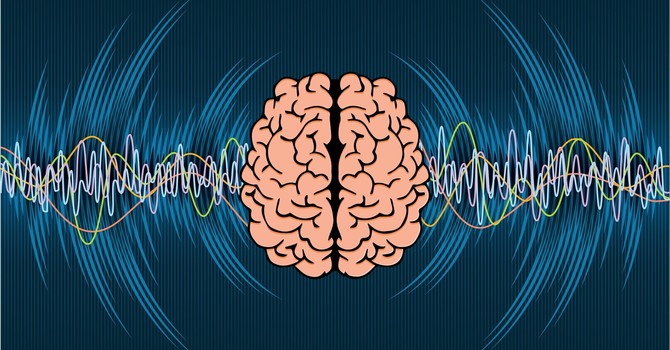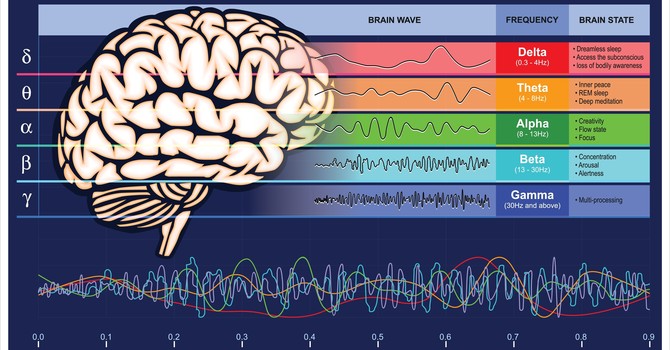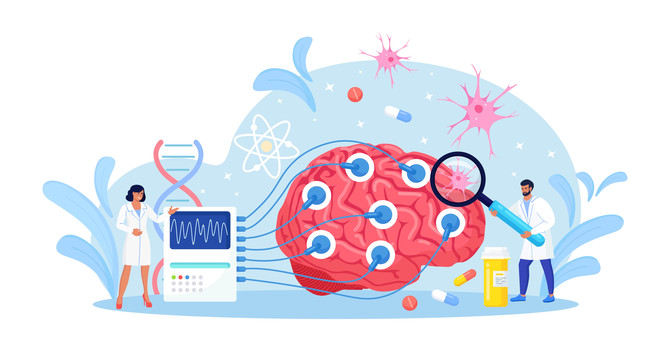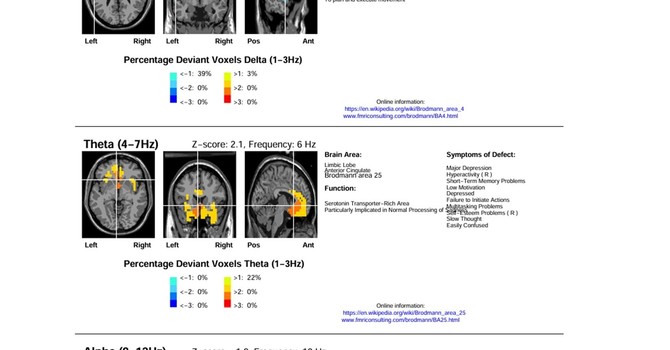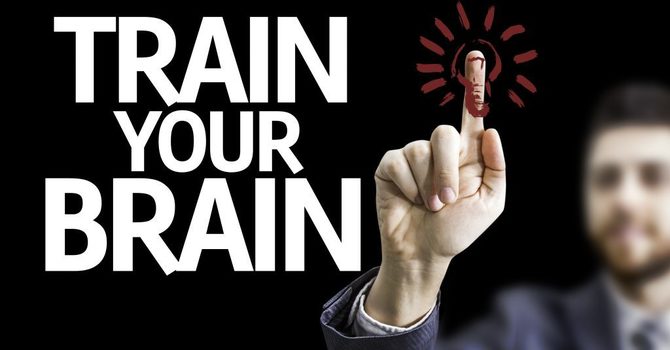Neurofeedback and Brain Mapping in Saint Paul for Anxiety, ADHD, Concussion Recovery, and Emotional Balance
Neurofeedback and qEEG Brain Mapping for Focus, Mood, Sleep, and Stress Relief
People usually come to Neurofeedback because their brain feels overworked, overstimulated, or disconnected. When you are struggling with anxiety, ADHD, memory issues, depression, sleep trouble, concussion symptoms, or chronic stress, your life can feel smaller than it should. A qEEG Brain Map helps you finally understand what your brain is doing and why you feel the way you feel. Neurofeedback gently retrains the patterns that are keeping you stuck and helps your brain return to balance. Our clinic in Saint Paul is known for compassionate care, accurate brain mapping, and individualized Neurofeedback plans that help you reclaim clarity, calmness, focus, and emotional stability.
Neurofeedback in Saint Paul: Train Your Brain, Transform Your Life
A safe, natural approach for anxiety, ADHD, depression, sleep issues, focus challenges, memory issues, and stress regulation
At O’Keefe Matz Functional Health Clinic in Saint Paul, we offer Neurofeedback as a safe, drug-free way to help the brain function at its best. Many people come to us struggling with memory issues, anxiety, depression, ADHD, sleep problems, focus issues, or lingering effects of stress and trauma. Neurofeedback gently retrains brainwave patterns, supporting better mood, improved attention, restful sleep, and overall emotional balance. If you have been searching for a natural solution to feel calmer, think clearer, and regain control of your life, you are in the right place. Hope and healing begin here with Neurofeedback in Saint Paul.
Ready to Harness Your Brain’s Natural Ability to Heal and Thrive?
Ready to Unlock Your Brain’s Full Potential for Lasting Health? Neurofeedback is a gentle, non-invasive approach that helps the brain self-regulate and adapt more efficiently. As shown in a comprehensive review of clinical applications and methodologies (see Neurofeedback: A Comprehensive Review on System Design, Methodology and Clinical Applications), this technique has been explored across conditions like ADHD, anxiety, insomnia, and concussion recovery, providing promising insights into how brain training can support true healing. https://pmc.ncbi.nlm.nih.gov/articles/PMC4892319/
Neurofeedback is a safe, non-invasive therapy that helps retrain the brain to work more efficiently. By providing real-time feedback on brainwave activity, it gently guides the brain toward healthier patterns that support focus, calm, sleep, and resilience. At O’Keefe Matz Functional Health Clinic in Saint Paul, we use Neurofeedback as part of a comprehensive approach to care, helping patients of all ages find lasting relief from issues like:
- Depression & Anxiety:
- insomnia,
- Focus & Attention Issues: Research shows neurofeedback can lead to meaningful improvements in attention and brain function, offering hope for children and adults struggling to stay focused SAGE Journals
- Memory problems,
- concussions, and more.
Research Highlights:
The Science Behind Neurofeedback
At O’Keefe Matz Functional Health Clinic, we believe in care that is both compassionate and evidence-based. Neurofeedback has been studied for decades, and the research is growing stronger every year. Here are some of the most promising findings from clinical studies that show how brain training can support health and healing
ADHD and Focus
-
Improved Symptoms – Neurofeedback has been shown to reduce inattention, impulsivity, and hyperactivity in children and adults with ADHD. Clinical EEG and Neuroscience, 2009: https://pubmed.ncbi.nlm.nih.gov/19715181/
- Comparable to Medication—In some studies, neurofeedback outcomes matched the benefits of methylphenidate, a common ADHD medication. Applied Psychophysiology & Biofeedback, 2003: https://link.springer.com/journal/10484
- Better Sleep with ADHD – Protocols like theta/beta and SMR training not only improve focus but also help children fall asleep more easily.
Frontiers in Human Neuroscience, 2014: https://www.frontiersin.org/articles/10.3389/fnhum.2014.01019/full
Memory and Cognitive Function
-
Sharper Memory – Randomized trials show neurofeedback can boost both episodic and working memory.
Memory Journal, 2015: https://doi.org/10.1080/09658211.2014.921713 - Aging Brains – Peak alpha training in older adults improved cognitive performance and mental clarity.
Applied Psychophysiology & Biofeedback, 2005: https://pubmed.ncbi.nlm.nih.gov/15889599/
Headaches and Migraines
-
Fewer Migraines – Children treated with neurofeedback experienced fewer and less intense headaches.
Applied Psychophysiology & Biofeedback, 2000: https://pubmed.ncbi.nlm.nih.gov/10832507/
Concussion and Brain Injury
-
Better Attention After TBI – Patients with moderate brain injuries improved focus and attention after beta-frequency training.
Journal of Neurotherapy, 2001: https://www.isnr-jnt.org/
Chronic Pain and Fibromyalgia
-
Less Pain, More Relief – Studies show neurofeedback can reduce pain intensity and improve quality of life in fibromyalgia patients.
Journal of Clinical Psychology, 2001: https://pubmed.ncbi.nlm.nih.gov/11406800/
Why This Matters for You
This growing body of research highlights what we see every day in our clinic: neurofeedback helps patients regain focus, calm, energy, and resilience. Whether you’re living with ADHD, migraines, concussion symptoms, chronic pain, or anxiety, neurofeedback may be the missing link in your healing journey.
What is Neurofeedback?
by the International Society for Neurofeedback & Research: ISNR
Neurofeedback
What is Neurofeedback?
Neurofeedback, also known as EEG Biofeedback, is a powerful learning modality designed to retrain dysregulated brainwave patterns, helping the brain achieve optimal stability and efficiency. This non-invasive technique has been recognized by the Food and Drug Administration (FDA) as safe, with no serious side effects reported since its discovery over 40 years ago. While neurofeedback does not diagnose or directly treat specific conditions, peer-reviewed research has shown its effectiveness in managing a range of neurological issues, including ADHD, migraines, tension headaches, insomnia, chronic pain, post-stroke syndrome, anxiety, and panic attacks, among others.
Evaluation Procedure: The QEEG
Neurofeedback begins with a comprehensive evaluation known as a Quantitative Electroencephalogram (QEEG). This assessment tool objectively and scientifically measures brainwave patterns to identify any deviations from normal functioning.
During the QEEG procedure, a snug cap equipped with 12 small sensors is placed on the head to record the brain's electrical activity. It's important to note that these sensors do not transmit any electrical current to the brain; they only record the signals produced by it. The recorded brainwave data is then compared to a large, sophisticated normative database, allowing the doctor to determine if the patient’s brainwave patterns differ from the norm. This evaluation provides the basis for developing personalized neurofeedback training protocols aimed at normalizing brainwave activity, thereby improving the brain's ability to function optimally.
Neurofeedback Training Sessions
In neurofeedback training sessions, patients are connected to a computer via non-invasive sensors that record their brainwave activity. The computer software monitors these brainwaves and provides real-time feedback to the patient in the form of a game, movie, or sound. This feedback is crucial—it lets the patient know when their brainwaves are becoming more regulated. For instance, in a common training setup, the patient might watch a movie, which becomes brighter as brainwaves normalize and darker when they become dysregulated. The brain's natural tendency to seek a clear picture drives it to adjust and correct its brainwave patterns, reinforcing the neurological circuits that promote optimal functioning. Over time, these neuroplastic changes become ingrained, helping patients apply these new patterns in their daily lives.
The Impact of Neurofeedback: Research and Recognition
Neurofeedback has been the subject of extensive research in prominent universities around the world for the past 40 years. Notably, Dr. Frank H. Duffy, a Professor and Pediatric Neurologist at Harvard Medical School, has emphasized the significant therapeutic potential of neurofeedback. He stated, “Neurofeedback should play a major therapeutic role in many difficult areas. In my opinion, if any medication had demonstrated such a wide spectrum of efficacy, it would be universally accepted and widely used.” This endorsement underscores the broad and impactful benefits of neurofeedback in addressing complex neurological conditions.
Through neurofeedback, patients can experience improved brain function, offering a non-invasive and scientifically supported method to enhance overall mental and neurological health.
Improve Your Brain & Change your life!
Unlocking Depression, Anxiety, Memory issues, & ADHD
Neurofeedback, also known as EEG (electroencephalogram) biofeedback, is a therapeutic technique that offers real-time feedback on brainwave activity through a computer-based program. This program uses auditory or visual cues to help patients become aware of their brainwave patterns and work towards modifying them. By engaging in this process, patients can learn to regulate their brain function, potentially alleviating symptoms associated with various neurological disorders and mental health conditions.
Improve your Brain
Empower your life!
What is Neurofeedback? - Watch video here with Dr. Matz
Unlock the power of your Brain
Worried about your cognitive health?
Having some focus issues, memory issues, depression, or Anxiety?
Neurofeedback for Migraine
Unlock the power of Neurofeedback to reduce your Headache pain
Neurofeedback for Insomnia
Sleep Sleep Sleep
Neurofeedback Home Training
Fun, easy, and right in your own home!
Neurofeedback is rapidly gaining recognition as an effective, drug-free method to enhance brain function and support mental well-being. Among the various neurofeedback approaches, quantitative electroencephalography (qEEG) neurofeedback stands out for its ability to provide personalized brainwave training based on detailed brain mapping. Traditionally offered in-clinic, qEEG neurofeedback is now becoming more accessible through home training programs—a game-changer for those seeking convenient and continuous care.
What Is qEEG Neurofeedback?
qEEG neurofeedback is a non-invasive method that measures and analyzes brainwave activity. A qEEG brain map provides insights into patterns associated with cognitive function, emotional regulation, and neurological imbalances. This data helps tailor neurofeedback protocols to an individual’s unique brain function, making the training highly personalized.
The Benefits of Home-Based qEEG Neurofeedback Training
While in-clinic neurofeedback is highly effective, home training offers several advantages:
-
Convenience: Train in the comfort of your home without scheduling frequent clinic visits.
-
Consistency: More frequent sessions can lead to quicker and more lasting results.
-
Cost-Effective: Home training programs can reduce the long-term expenses associated with clinic-based care.
-
Family Involvement: Multiple family members can benefit from using the same system.
How Does Home qEEG Neurofeedback Work?
A home neurofeedback program typically involves:
-
Initial qEEG Brain Mapping – Conducted at a professional clinic, this assessment identifies areas of dysregulation and sets the foundation for a tailored protocol.
-
Home Equipment Setup – Users receive a specialized EEG headset and software designed to provide real-time neurofeedback training.
-
Personalized Training Plan – Based on the qEEG analysis, users follow a structured program to reinforce optimal brainwave activity.
-
Ongoing Monitoring & Adjustments – Practitioners review progress remotely and modify protocols as needed to ensure effective training.
Who Can Benefit from qEEG Neurofeedback Home Training?
Home-based neurofeedback training has shown promise in addressing a variety of conditions, including:
-
Anxiety & Depression – Helps regulate emotional responses and balance brain activity.
-
ADHD & Learning Disabilities – Enhances focus, attention, and cognitive performance.
-
Sleep Disorders – Promotes healthier sleep patterns and reduces insomnia.
-
Traumatic Brain Injury (TBI) & Concussion Recovery – Supports neurological healing and cognitive function.
-
Chronic Stress & PTSD – Aids in calming overactive stress responses and restoring emotional balance.
Is Home Training Right for You?
While home neurofeedback is an excellent option for many, it’s essential to have professional guidance to ensure safety and effectiveness. Working with an experienced clinician ensures proper setup, ongoing monitoring, and adjustments as needed.
Bringing qEEG Neurofeedback Home with O’Keefe Matz Functional Health Clinic
At O’Keefe Matz Functional Health Clinic, we specialize in qEEG-guided neurofeedback, offering in-depth assessments and personalized training programs. We now provide home training options, allowing our patients to experience the benefits of neurofeedback on their schedule. If you're interested in exploring this powerful tool for brain optimization, contact us today to learn more about getting started!
Take the next step in your brain health journey with qEEG neurofeedback home training. Your brain—and your future—will thank you!
Blog
QEEG Neurofeedback
Neurofeedback, also known as EEG (electroencephalogram) biofeedback, is a therapeutic intervention that provides immediate feedback from a computer-based program that assesses a client’s brainwave activity. The program uses auditory or visual signals to help patients recognize their thought patterns and try to modify them. Through this process, clients can learn to regulate and improve their brain function and hopefully alleviate symptoms of various neurological disorders and mental health conditions.
Dr. Janell Matz
Book NowDiscover a balanced mind. Schedule your Neurofeedback session today.
Neurofeedback is a revolutionary approach to understanding and improving your brain's function. By observing your brain in action, we can identify patterns and areas that might benefit from adjustment. This non-invasive technique encourages your brain to self-correct, leading to enhanced focus, reduced anxiety, and a better overall mood. It's like a personal training session for your brain, tailored to help you achieve a state of optimal mental well-being.
O'Keefe Matz Chiropractic & Functional Health Clinic
1053 Ashland Ave,Saint Paul, MN
55104 View Staff & Treatments


